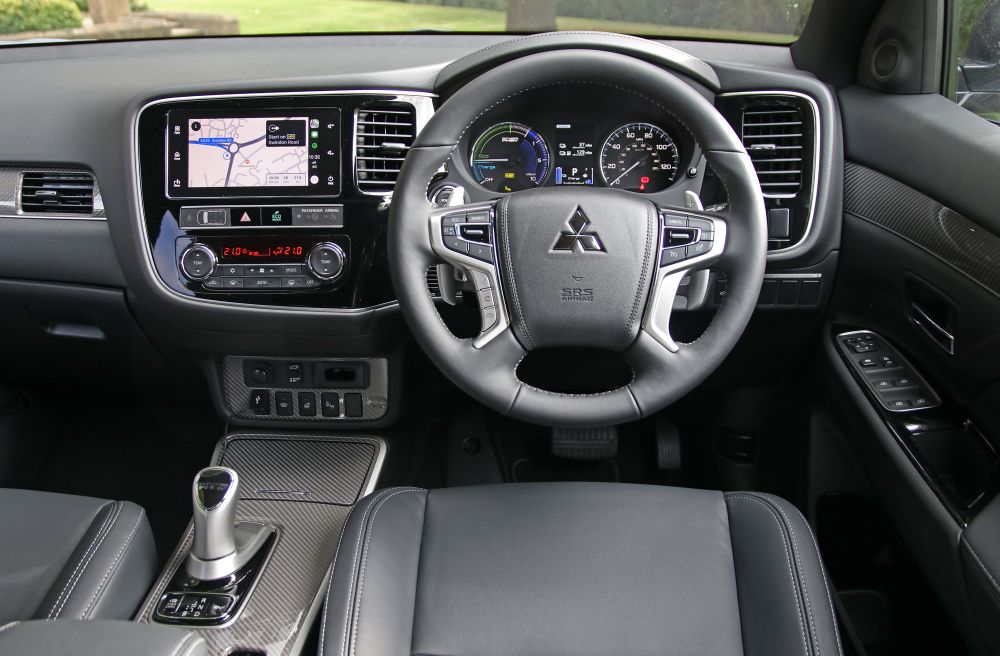Performance
The way the Outlander PHEV works is quite unusual compared to other hybrids. Instead of being a petrol car with an electric motor attached to help it out, the Mitsubishi is actually an electric car with a petrol motor to help it out. It simply becomes a generator when the battery is low and provides more electric power for the motors.
In normal driving at speeds below 60mph, the engine never has any connection at all with the wheels. Only once the car gets above those speeds a gearbox engages and the petrol motor provides the drive, as it’s more efficient.
This matters as it means the Outlander behaves like an electric car in most situations, with the same instant power when you pull away from a standstill. If you want more performance and push the accelerator pedal down harder, the petrol engine will kick in to provide more electricity for the two electric motors.
Then, on the motorway where most EVs start to fade, the PHEV behaves just like a petrol car. It sounds a great idea and works well, just remember it’s using fuel though!
Drive
Driving the Outlander PHEV is as simple as getting into any other SUV with an automatic gearbox. Press the start button, select drive and go. You can choose different modes to change the way the accelerator responds and alter the amount of regenerative braking, but otherwise it’s simple and relaxing to drive.
If you want to push harder or select a mode to recharge the battery using the engine (for example, if you are planning on going into a zero-emission zone) then the petrol motor will thrum away quietly in the background.
Mitsubishi makes quite a fuss about it’s all-wheel-drive system too, saying it was developed for rally cars. It is quite clever and might make a difference if you regularly drive on slippery roads. But generally the Outlander doesn’t feel much like a sportscar, and anyone trading in a sporty saloon or German SUV for an Outlander might find it a little remote feeling.






















